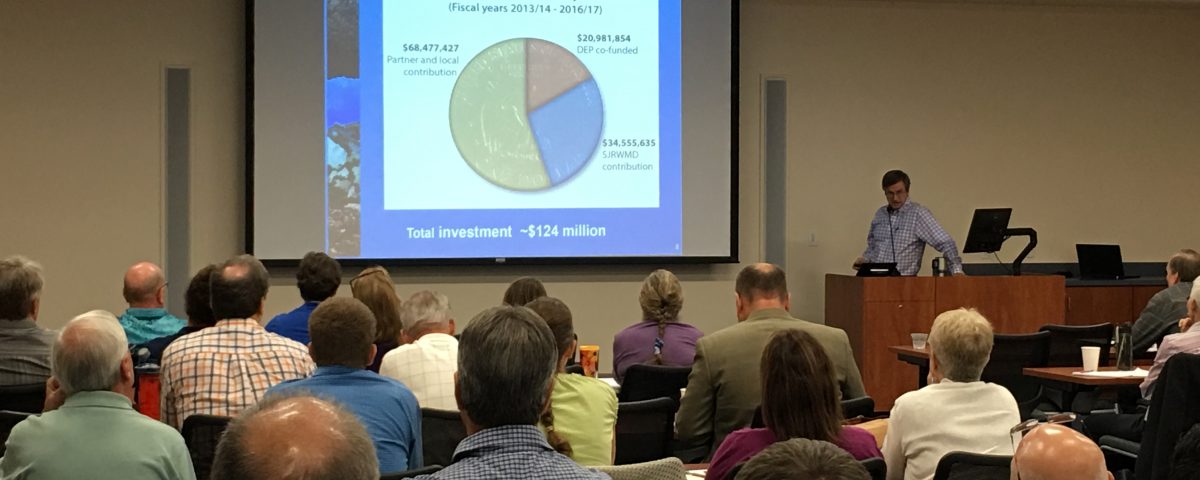District and UF scientists discuss progress made in second year of springs science investigation

PALATKA, Fla., Sept. 9, 2016 — More than 50 scientists and engineers with the St. Johns River Water Management District and University of Florida (UF) met Sept. 9 to report on progress made in the second year of a three-year partnership to enhance the scientific foundation needed to develop solutions to restore and protect Florida’s springs.
“Science helps us determine and direct the most beneficial and cost-effective solutions to challenges such as those facing Florida’s springs,” said St. Johns River Water Management District Executive Director Dr. Ann Shortelle. “We are making great strides in our work – I’m excited to share that more than 72 springs protection projects have been funded through our cost-share program, including the acquisition of Silver Springs Forest Conservation Area last December. This collaborative scientific partnership will have a lasting impact by ensuring that our projects will continue to protect and restore our major spring systems.””
Cooperating with SJRWMD researchers to seek ways to protect Florida’s natural wonders exemplifies the solutions-oriented science at the core of our land-grant mission at UF’s Institute of Food and Agricultural Sciences,” said Dr. Jack Payne, leader of UF/IFAS and the university’s senior vice president for agriculture and natural resources. “The array of experts from the state’s flagship public university and one of its leading water resources stewards represents the multiple areas of specialized knowledge necessary to tackle challenges as complex as springs protection and restoration.”
“Although much needs to done, the Collaborative Research Initiative on Sustainability and Protection of Springs (CRISPS) program coordinated by the UF-Water Institute has made significant advancement in improving our understanding complex biogeochemical, hydrologic, and ecological processes regulating health of these fragile ecosystems” said Dr. Ramesh Reddy, graduate research professor and chair of the Soil and Water Sciences Department and the principal investigator of the project.
Among second-year accomplishments by the springs science teams:
- Researched whether increased submerged vegetation (and associated flow resistance) in Silver River have contributed to flow reductions.
- Investigated how much of the nitrate load to the aquifer may be attenuated (lost from the aquifer through biological process called denitrification) before it reaches the springs.
- Undertaken experiments in Silver River and in the laboratory to determine if elevated nitrate concentrations benefit algae more than preferred rooted plants.
- Modeled the formation and behavior of hypothetical underground aquifer conduit networks to help understand overall spring hydrology.
- Analyzed whether the large quantities of nutrients in Silver River sediments are important to nuisance benthic algae in the overlying river and whether these algae compromise the food web in Silver River.
In the four years that Gov. Rick Scott and the Florida Legislature have allocated targeted springs funding, the district has invested $35 million toward $128 million in cost-share projects to improve water quality and/or enhance flows in Volusia Blue Spring, Silver Springs, the Wekiva River system springs and Lower Santa Fe River springs, in cooperation with the Florida Department of Environmental Protection and local partners.

